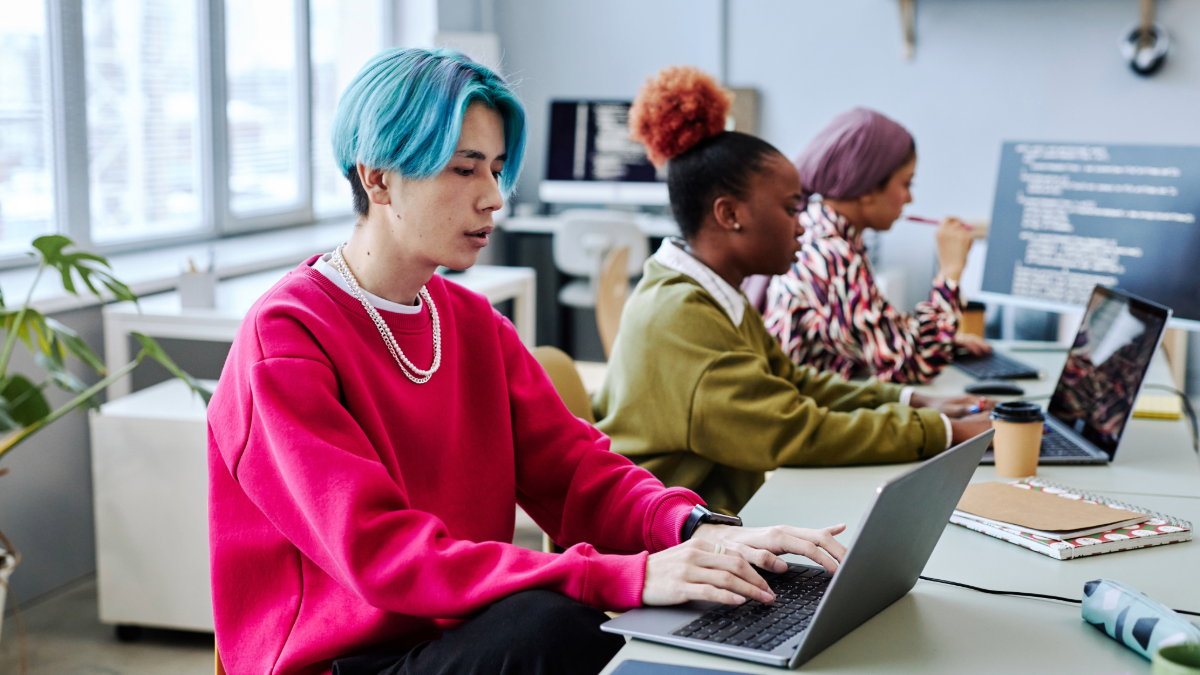Eight years ago, a friend helped me build an IKEA daybed. It took a whole morning of balancing wood, losing pieces and decoding instructions. It wasn’t perfect. The drawers didn’t work properly (my son fixed those later). And we had a suspicious number of screws left over. But every time I walk into that room, I think fondly of that morning. Wrestling with those pieces made that daybed feel special. We built it ourselves.
Apparently, I’m not alone. Researchers call it the IKEA effect: people who build their own IKEA furniture value the product 63% more than a pre-built version of the same piece. And it’s not just furniture. We love the things we make ourselves. The notes we write instead of the Hallmark card. The cake we make versus buy. Our own work leaves us with a strong sense of ownership and accomplishment – plus the lessons we learn along the way.
It struck me that this is exactly what’s required to build a more inclusive and equitable workplace. We have to roll up our sleeves and do the hard work. We have to build it from scratch. We have to invest in the journey, warts and all. But, quite frankly, that’s the opposite of what most companies want. They want packaged DEI programs with one-size-fits-all lessons and generic takeaways.
One learning and development leader recently told me that all he wanted was a short set of slides on unconscious bias – what it is and how to mitigate it. He wanted a manual, a cheat sheet. A quick fix. Unfortunately, there isn’t one. We can’t inoculate ourselves against exclusion by listening to a lecture or banish bias by reading a few slides.
Stanford professor Jennifer Eberhardt explains why: “Bias is a kind of distorting lens that’s a product of the architecture of our brain and the disparities in our society.” Bias is different for everyone and that means each and every person has to go on their own journey to understand and address it. Simply put: You have to build your own daybed.
Building a culture of inclusion is not about operating machinery. It’s about learning a new way of being in the world. We learn when we do our own messy, imperfect work to gain new perspectives. We grow and change when we confront our own blind spots. When we struggle with discomfort long enough to reach a new understanding, we own that wisdom.
This work is hard. Especially now. In the face of pandemics, school shootings, political and social discord, and war, it’s no surprise that people want something to be simple. They want black and white steps on a powerpoint slide.
I understand the wish. But inclusion doesn’t work that way. However, here are three things you can do to get your company and your people started on the journey.
Make the space and make it safe. Inclusion requires us to examine what we believe. To suspend what we think we know better in order to understand where others are coming from. Learning to see different perspectives takes time and space to make mistakes. Before you get it right, you need the safety and latitude to do it wrong. Experimental spaces outside of the crush of every day gives you and your colleagues the chance to try, fail and try again. A shared experience like discussing a film, an article or a story invites questioning and listening, immersing yourself in new ideas and different realities.
Don’t go it alone. Learning together is always more powerful and more sustainable than learning alone. Examine new ideas through the mirror of your colleagues’ perspectives. Challenge your assumptions by sharing them with others - your team, a cross-functional group or colleagues in different ERGs or affinity groups. A collective approach means the process is as collaborative as the desired outcomes. And most importantly, you widen the circle of empathy by learning together, deepening relationships and seeing each other in a new light.
Do the work. The best learning is not about the answers, it’s about the questions. It’s about framing the exploration in a way that makes learning relevant to you and to your organization. The hands-on work takes you from listening to ideas to owning the outcomes. It’s about the hard, sometimes uncomfortable work of starting where you are and not where someone else thinks you should be. Yes, you can and should hire an expert facilitator to guide the journey - but you can’t lose sight of the fact that it’s a journey and not an event.
These three ways of thinking about inclusion shift the mindset from passive learning to active problem solving. They ground your approach in the organization’s needs and circumstances rather than a consultant’s agenda. There’s a reason they often say “one-size-fits-all” means “one-size-fits-none.” Owning and shaping your own outcomes increases the chances that your efforts will stick and real change will take root.
Like my IKEA daybed, you have to start at the beginning. Figure out where you are. Spread out the pieces. You will lose a few screws and make some mistakes. You won’t ever fully eradicate bias. But by building awareness from the ground up and personalizing the process, you will engage each other’s hearts and open new eyes. Changing the workplace starts with each of us. It’s never a powerpoint slide or a box you can tick. It’s a long, arduous – but infinitely valuable – labor of love.








